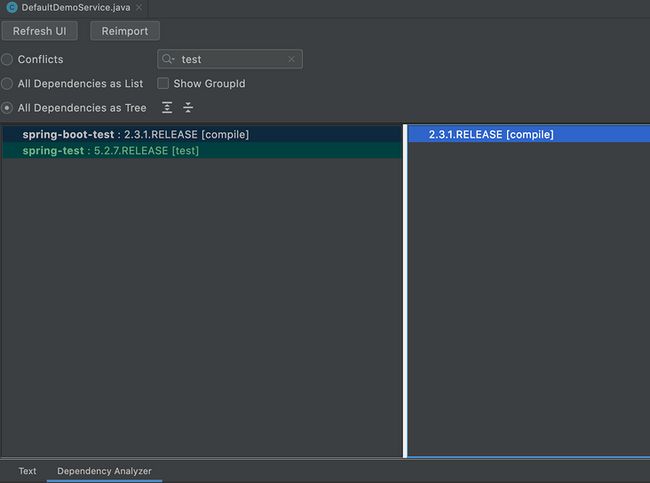dubbo如何测试?
和spring完全一样。
其实就是基于2个注解。
一个是springboot的注解:@SpringBootTest。
一个是spring的注解:@RunWith(SpringRunner.class)。
这两个都是测试相关的注解,而且都在测试jar里。
核心代码
测试代码示例
import lombok.extern.slf4j.Slf4j;
import org.apache.dubbo.spring.boot.sample.provider.bootstrap.DubboRegistryZooKeeperProviderBootstrap;
import org.apache.dubbo.spring.boot.sample.provider.service.DefaultDemoService;
import org.junit.Test;
import org.junit.runner.RunWith;
import org.springframework.beans.factory.annotation.Autowired;
import org.springframework.boot.test.context.SpringBootTest;
import org.springframework.test.context.junit4.SpringRunner;
/**
* @author javaself
*/
@Slf4j
@RunWith(SpringRunner.class) //使用junit4
@SpringBootTest(
classes = DubboRegistryZooKeeperProviderBootstrap.class, //指定启动入口类
webEnvironment = SpringBootTest.WebEnvironment.RANDOM_PORT)
public class DubboTest {
@Autowired
DefaultDemoService defaultDemoService; //注入dubbo服务
@Test
public void test() throws Exception {
String s = defaultDemoService.sayHello("Hello, world!"); //调用dubbo服务进行测试
log.info(s);
}
}核心步骤
- 创建测试类
- 在测试类上,加2个注解
- pom文件添加依赖的测试jar
- 运行测试类的测试方法
就像一般的测试类的测试方法一样。
@SpringBootTest注解
可以指定一些配置,比如classes属性是指定springboot项目的启动入口类。
依赖的测试jar
主要是springboot和spring,还有junit
org.springframework.boot
spring-boot-test
junit
junit
test
org.springframework
spring-test
test
zk
在application.properties添加禁止注册配置,禁止本地服务注册到zk,避免影响测试环境。
# 用于自测,禁止注册到zk
dubbo.registry.register=false多个测试类
如果有多个测试类,可以把公共的部分独立出来。
具体来说,就是写一个基础测试类。
@RunWith(SpringRunner.class)
@SpringBootTest(
classes = xxx.class,
webEnvironment = SpringBootTest.WebEnvironment.RANDOM_PORT)
public abstract class BaseTest {
}然后,其他具体的业务测试类,继承它。
这样,就不需要每个业务测试类,都要写一遍重复的注解代码。
总结
核心步骤就是上面讲的。
骨架代码完成之后,后面就是直接注入bean,就可以测试bean。
就像普通的spring bean一样。
测试dubbo服务和普通的spring bean没有任何区别,因为dubbo服务也是spring容器里的bean。
